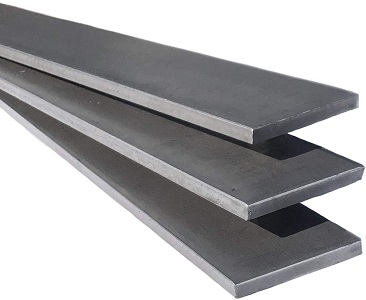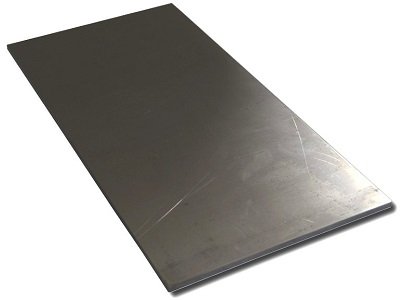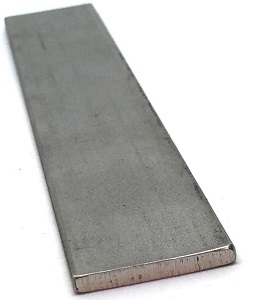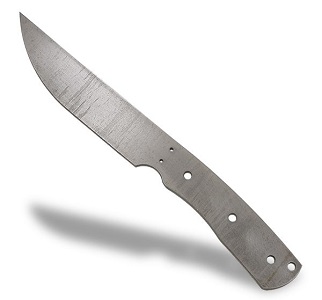
What is Best Knife Making Steel? Definite Guide
Steel is a combination of iron and carbon. All steels are consisting of other limited amounted elements, such as manganese, sulfur, silicon, and phosphorus. If steel doesn’t contain any of these elements, it’s called carbon steel. Steel used for knife blades is increased with extra elements and is known as alloy steels. These additions provide unique properties for different types of steel. Alloy steels with these additions are corrosion-resistant and labeled stainless steel, and they’re the most frequently used steel in making knife blades.
A well-built knife is a tool that functions persistently without failing. Still, making a knife that is not subject to failure can be a cumbersome task to achieve, because a knife blade must be sharpened to a fine edge that mustn’t fracture or dull. If you want to accomplish this, it is crucial to choose the appropriate knife material, as the wrong steel and grade will eventually end in premature failure and edge dulling. Not all metals are made the same for knives, so read the line below carefully to see what’s the best steel for knife making.
Tool Steel

Tool steel is one of the most typical options for making knives. Tool steels are generally, carbon steels that include extra alloying elements which boost their mechanical features. These alloying elements frequently raise the steel’s corrosion resistance too, however not to the stainless-steel level.
A standard tool steel grade that has used as a knife material is A2 (1% carbon, 5% chrome, air-hardening tool steel). Although it can’t range hardness as high as some other tool steels, it has excellent toughness.
Still, A2 could be susceptible to rust if care hasn’t provided. D2 (high carbon, high chromium, air-hardening tool steel) is another solution that has higher corrosion resistance and edge retention than A2. But, this solution provides a lower toughness. M2 (molybdenum based) is a top tool steel that is perfect at retaining a knife edge, but it can be too fragile for specific demands.
Knife Making Supplies
Get the Latest Deals on Knife Making Tools
unbeatable prices // fastest shipping // free delivery available
Carbon Steel

Carbon steel grades with a high quantity of carbon are attractive for knife making, since it will provide the blade hardness and strength required to hold up against impact and wear. Still, appropriate heat treating must accomplish on high carbon steels. If too quickly a quench is used, the knife will be too fragile and may fracture, if the metal is normalized or annealed, it’ll be too soft, and the blade won’t keep a sharp edge very long.
Knives formed from carbon steel can be inclined to rusting too. It is because carbon steel doesn’t include many alloying elements that guard it against corrosion. You must insure that a carbon steel blade doesn’t rust.
Typical grades of carbon steel for knife making contain C1045 (medium carbon steel), C1075 (high carbon steel), and C1090 (high and wear resistance carbon steel).
Stainless Steel

Stainless steel is the often type of knife-making steel and it is the best steel for knives that are resistant free. The extra advantage of using stainless steel is the inclusion of chromium and other alloying elements that boost corrosion resistance. Stainless steel knives have typically formed out of austenitic or martensitic stainless steels.
If you need a knife that has proper edge retention, the martensitic and ferritic grades of stainless steel must have a high enough carbon grade, capable of achieving high hardness. Categories like 420 (high carbon steel with a minimum 12% of chromium) and 440 (high carbon steel with the highest hardness and wear resistance) have typically used for knife making.
Austenitic grades like 316 (standard molybdenum-bearing stainless steel) may sometimes use for knife making. Still, austenitic grades are typically not capable of hardening adequately to provide a lasting edge. Low carbon forms of austenitic stainless steel, like 304L (extra-low carbon stainless steel), should be skipped when making knives, except corrosion resistance is more important than the blade life.
Steel Properties
The choosing of steel for knifemaking particular demands has established on the properties of the metal and other aspects such as manufacturability. If the metal is demanding to manufacture, then it isn’t useful in a manufacturing environment. These properties are formed by the alloys added to steel and by the techniques performed in its manufacture.
Here are 10 most essential features of blade steel:
1. Hardness: A criterion of the steel’s ability to resist sustained deformation that has measured on a Rockwell Scale (hardness scale based on indentation hardness of a material).
2. Hardenability: The capability of steel to be hardened by the heat-treating operation.
3. Strength: The steel’s capacity to withstand applied power.
4. Elasticity: The steel’s capability to bend or flex with no breaking.
5. Toughness: The steel’s strength to absorb force before the shattering.
6. Sharpness: The initial blade sharpness usability and functionality.
7. Edge Holding: The capacity of the steel blade to keep an edge with no iterative resharpening.
8. Corrosion Resistance: The steel capability to resist degeneration as an effect of reaction with its surrounding.
9. Wear Resistance: The resistance capability to wear and corrosion throughout use.
10. Productivity: The simplicity with which provide machined, cold formed, blanked, forged, extruded and heat-treated of the steel.
Nomenclature of the Steel
The classification of the knife steel types and their properties has frequently derived from the internal metal structure. Since metal is heated and cooled, its internal structure suffers changes. The systems based throughout these changes are names such as Austenite and Martensite. Martensite is a stable structure that can be created by quickly cooling certain kinds of steel throughout heat-treating. Metals that are able of forming Martensite are well-known as martensitic steels, and this sort of steel is most popular in the cutlery industry.
Additions for Alloy
The properties of steel can change by adding additional elements to the metal, throughout the process of melting. The alloying elements that are crucial to knife-making have explained below these lines with short info of how they impact on steel properties.
- Carbon – isn’t an alloying element because it’s appeared in plain carbon steels.
- Chromium – increases hardenability, wear resistance, and corrosion resistance. It’s the central element in martensitic stainless steels, which have most commonly used for sports cutlery utensils.
- Molybdenum – boosts hardenability, elastic strength, and corrosion resistance, especially pitting.
- Nickel – increases toughness, hardenability and corrosion resistance. It’s a leading element in austenitic stainless steel that is occasionally used for making dive knives.
- Vanadium – boosts hardenability and develops fine grains. Grain structure in steels is another significant aspect in wear resistance and strength.
1095 Knife Steel

1095 Steel is the primary form of carbon steel and the most frequently used in the making of numerous types of knives. It contains 95% of carbon which improves steel hardness and decrease the amount of wear that a blade will meet during a lifespan.
Even with the lowering in wear caused by the high presence of carbon, 1095 steel isn’t as hardened as other kinds of steel because of the small amount of manganese. Still, even though manganese cause hardening of the steel, in higher concentrations, it causes a more fragile blade.
1095 Steel Usage
This type of knife making steel, keeps a proper knife edge and is very easy to sharpen. But, the properties of this kind of steel tend to rust rapidly. These types of blades will typically have some sort of coating to resist rusting, but if the edge has appropriately preserved, rust shouldn’t be a big issue for you.
Since this steel is more breakable than other kinds of steel, it’s overall well for blades that aren’t much thin. It’s plain to sharpen, but if a knife made with this sort of steel doesn’t have a proper amount of thickness behind it, it can break easily. That’s why, it isn’t an adequate grade of steel for folding knives, sushi knives or tools.
It can be heat-treated to boost its strength entirely, but steel can becomes fragile after this and even break, so it isn’t much you can do about it. 1095 steel can use for chopping knives, but it isn’t the most effective choice. Yes, it shines, but they’re more steels out there which are better for that application. Even though this type of steel hasn’t alloyed with chromium such as stainless steel, it’s very easy for polishing.
Useful Features
It is suitable for functional show swords, like those found during military ceremonies. It would be entirely helpful for replica swords and blades or daggers. However, other kinds of steel, particularly stainless, will be more useful for a different utensil appliance, 1095 is still very useful for a significant number of dining tools. It’s a proper metal for blades used for religious purposes or ritual ceremony. It has frequently used in some kinds of machetes.
To preserve your 1095 knife rust free for the longest time possible, rinse it off after every use, wipe it and clean, or oil it at least once in ten days. The oil creates a barrier that blocks moisture from contacting the steel. It provides a very polished look of your knife.




